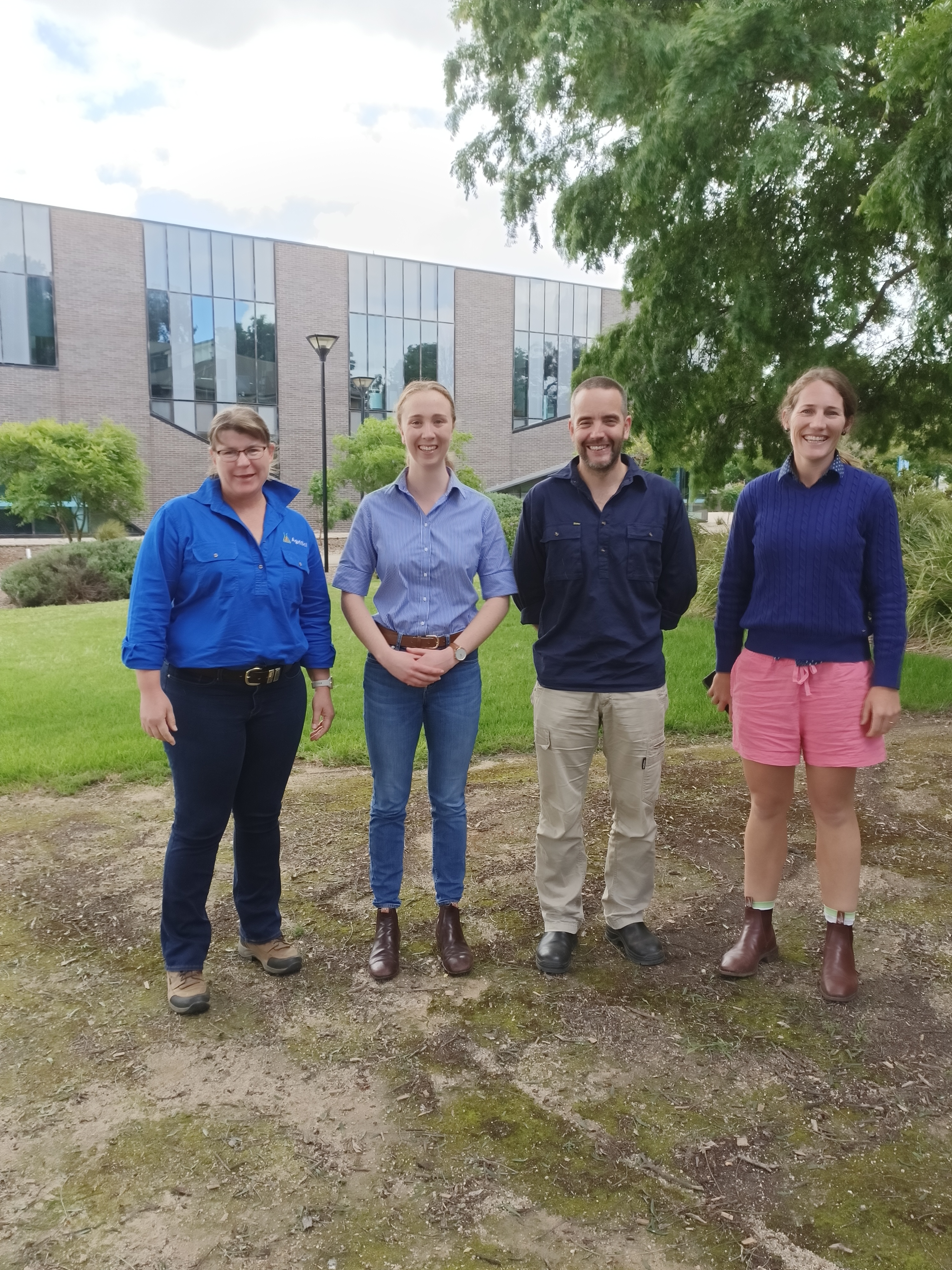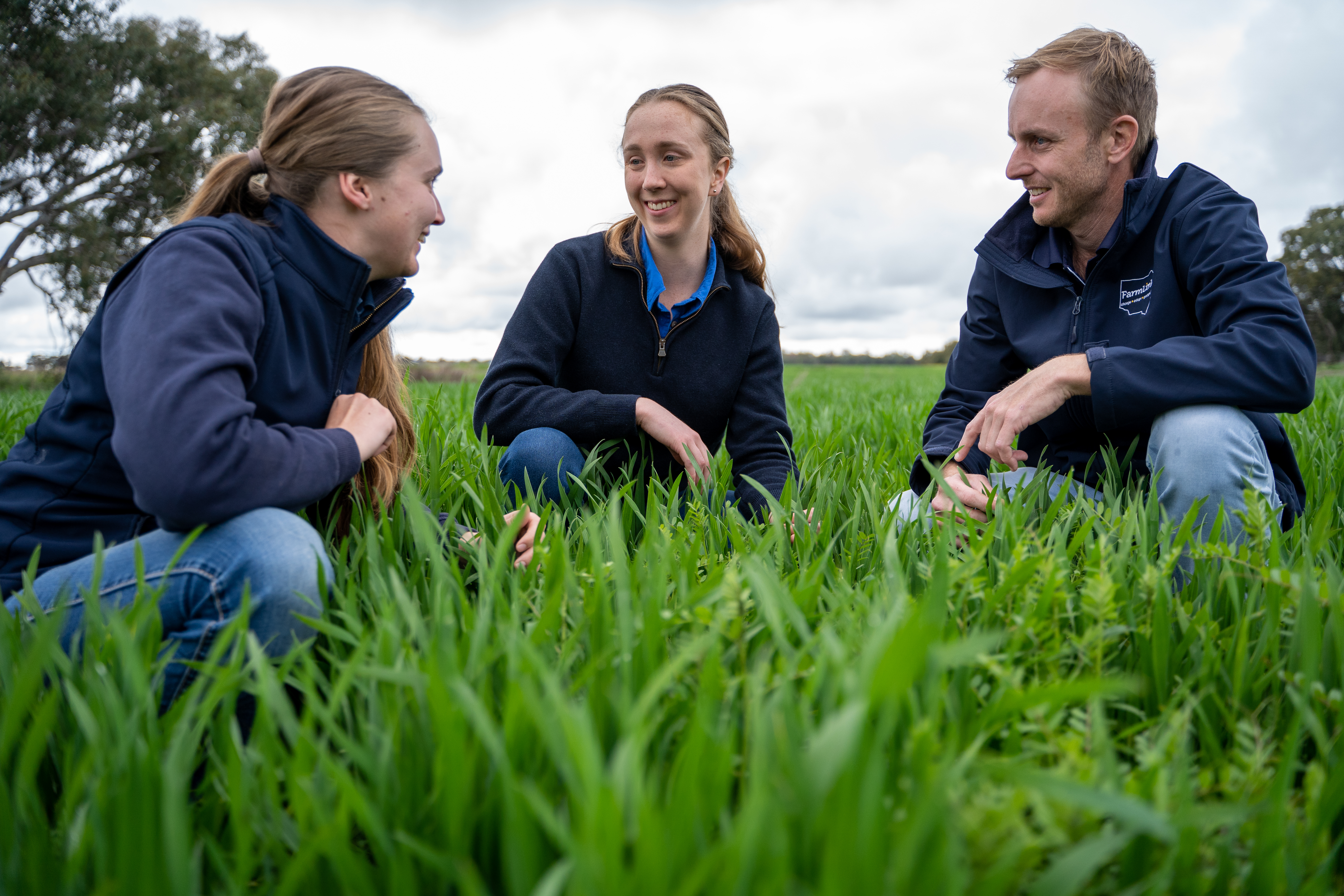Cool Soil Initiative
In 2022, the Cool Soil Initiative awarded Sophie Hanna with a scholarship to undertake her Honours year at Charles Sturt University. Sophie spoke to us about her experience and how the Cool Soil Initiative impacted her final year of studies.
 My passion for Australian agriculture and rural communities stems from my family’s beef cattle grazing farm in the Upper Murray, North East Victoria. From being raised with calves I have always been interested in all aspects of the farm from the grass roots and soil, to the breeding herd, to the business operations. I have always loved the land and the way we manage it to maximise productivity in a sustainable manner.
My passion for Australian agriculture and rural communities stems from my family’s beef cattle grazing farm in the Upper Murray, North East Victoria. From being raised with calves I have always been interested in all aspects of the farm from the grass roots and soil, to the breeding herd, to the business operations. I have always loved the land and the way we manage it to maximise productivity in a sustainable manner.
My passion for the farm, science and animals led me to study a Bachelor of Agriculture at The University of Melbourne where I grasped many educational, co-curricular and leadership opportunities. During my studies I found a particular interest in soil science, genetics and farm economics which led me to study a Bachelor of Science (Honours) in soil science at Charles Sturt University in Wagga Wagga with the supervision of Dr Jason Condon, Dr Cassandra Schefe and Dr Brooke Kaveney. My interests in maximising agricultural production and sustainability by alleviating soil constraints led me to conduct a research project which investigated the influence of lime application on the mineralisation of organic carbon, nitrogen and phosphorus in an acidic soil.
Sophie Hanna
Dr Cassandra Schefe
It was an honour and I am extremely grateful to have received a scholarship from the Cool Soil Initiative which funded my project and supported me throughout my studies. The aspirations and achievements of the initiative are truly inspirational, so it has been a privilege to be included in the actions this year. The opportunity to work with Cass, conduct research which contributed to the initiative and to be invited to showcases and grower’s meetings were phenomenal experiences. These opportunities reinforced my understanding of the importance of agricultural research and innovation and enhanced my appreciation of the work Cass and the team are achieving.

Agriculture is an immensely interesting and important industry to work in as we have the opportunity to innovate the way in which we manage land to feed the world, simultaneously to sustaining ecosystems. The identification and implementation of practices which can mitigate greenhouse gas emissions and sustain agricultural production are pivot for the success of farming enterprises and the environment. I am excited to work in an industry which is continuously striving to improve efficiency, overcome constraints and maximise production in a sustainable manner. The leadership of the Cool Soil Initiative in these areas is exciting and inspirational.
Following completing my research dissertation and presentation I have been seeking a range of work experience opportunities to kick-start my agricultural career. I am excited to continue developing my agricultural science skill set and to continue collaborating with leading industry professionals to sustain the prosperity of Australian agriculture.